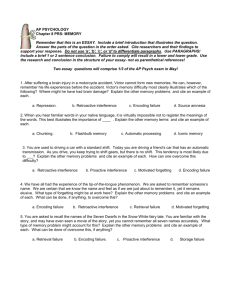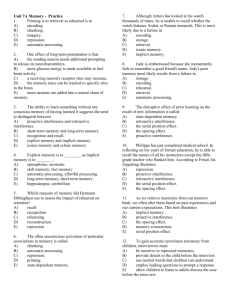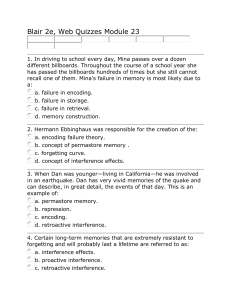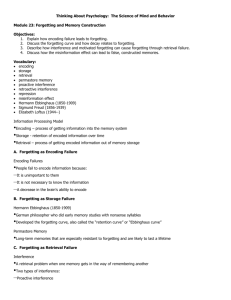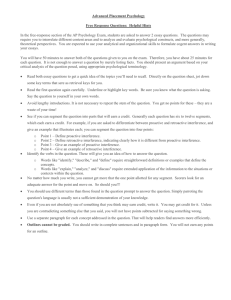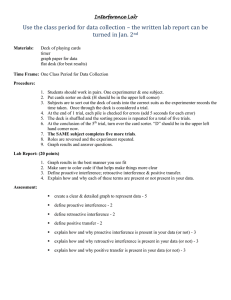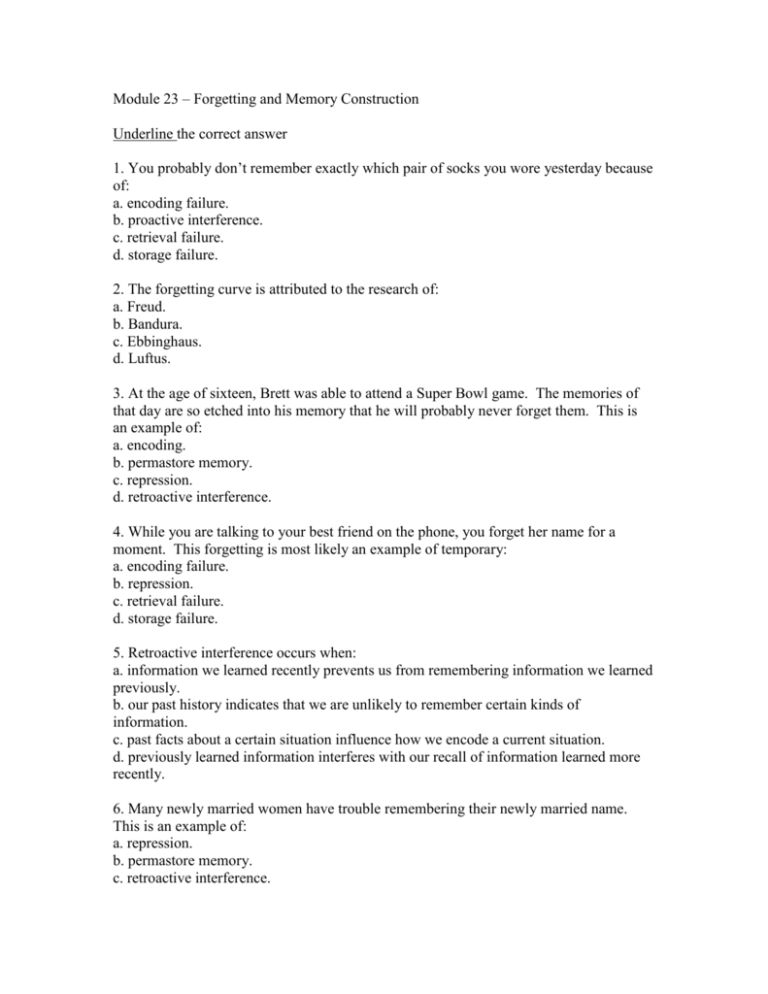
Module 23 – Forgetting and Memory Construction
Underline the correct answer
1. You probably don’t remember exactly which pair of socks you wore yesterday because
of:
a. encoding failure.
b. proactive interference.
c. retrieval failure.
d. storage failure.
2. The forgetting curve is attributed to the research of:
a. Freud.
b. Bandura.
c. Ebbinghaus.
d. Luftus.
3. At the age of sixteen, Brett was able to attend a Super Bowl game. The memories of
that day are so etched into his memory that he will probably never forget them. This is
an example of:
a. encoding.
b. permastore memory.
c. repression.
d. retroactive interference.
4. While you are talking to your best friend on the phone, you forget her name for a
moment. This forgetting is most likely an example of temporary:
a. encoding failure.
b. repression.
c. retrieval failure.
d. storage failure.
5. Retroactive interference occurs when:
a. information we learned recently prevents us from remembering information we learned
previously.
b. our past history indicates that we are unlikely to remember certain kinds of
information.
c. past facts about a certain situation influence how we encode a current situation.
d. previously learned information interferes with our recall of information learned more
recently.
6. Many newly married women have trouble remembering their newly married name.
This is an example of:
a. repression.
b. permastore memory.
c. retroactive interference.
d. proactive interference.
7. Derek was involved in an auto accident. Shortly after the event, Derek realized he
didn’t remember anything about the situation or events leading up to it. Derek’s
forgetting the event is an example of:
a. proactive interference.
b. retroactive interference.
c. repression.
d. encoding.
8. The concept of repression was developed by:
a. Freud.
b. Bandura.
c. Ebbinghaus.
d. Luftus.
9. Loftus and Palmer asked two groups of observers how fast two cars had been going in
a filmed traffic accident. Observers who heard the vividly descriptive word “smashed” in
relation to the accident later recalled:
a. significant greater speeds.
b. that the drivers of the vehicles were intoxicated.
c. that the drivers of the vehicles were males.
d. the details of the accident with vivid accuracy.
10. When dealing with child witnesses, memory researchers discovered that:
a. anatomically correct dolls help children accurately report sexual abuse in cases
involving family members.
b. children are remarkably accurate witnesses.
c. children usually don’t like to talk about past events with adults.
d. misinformation and suggestibility can lead children to construct false memories.


